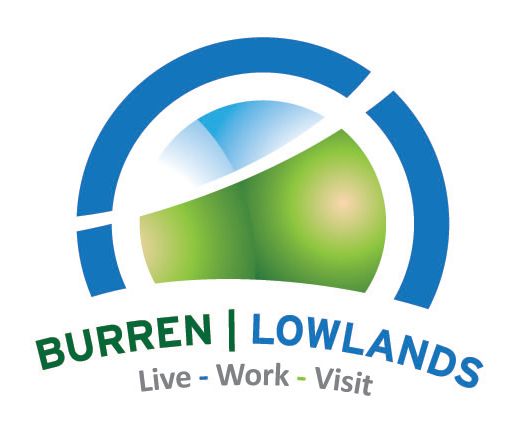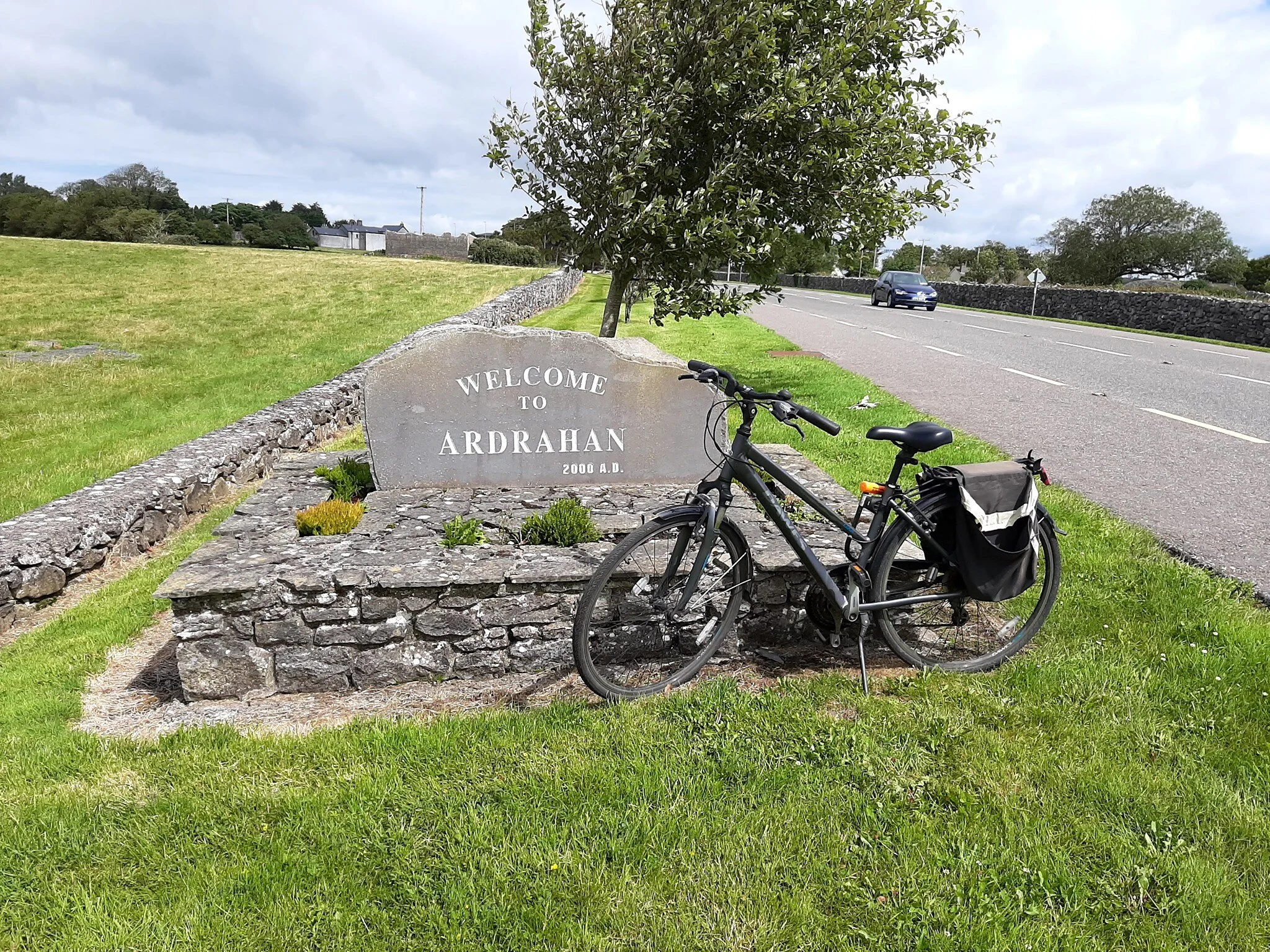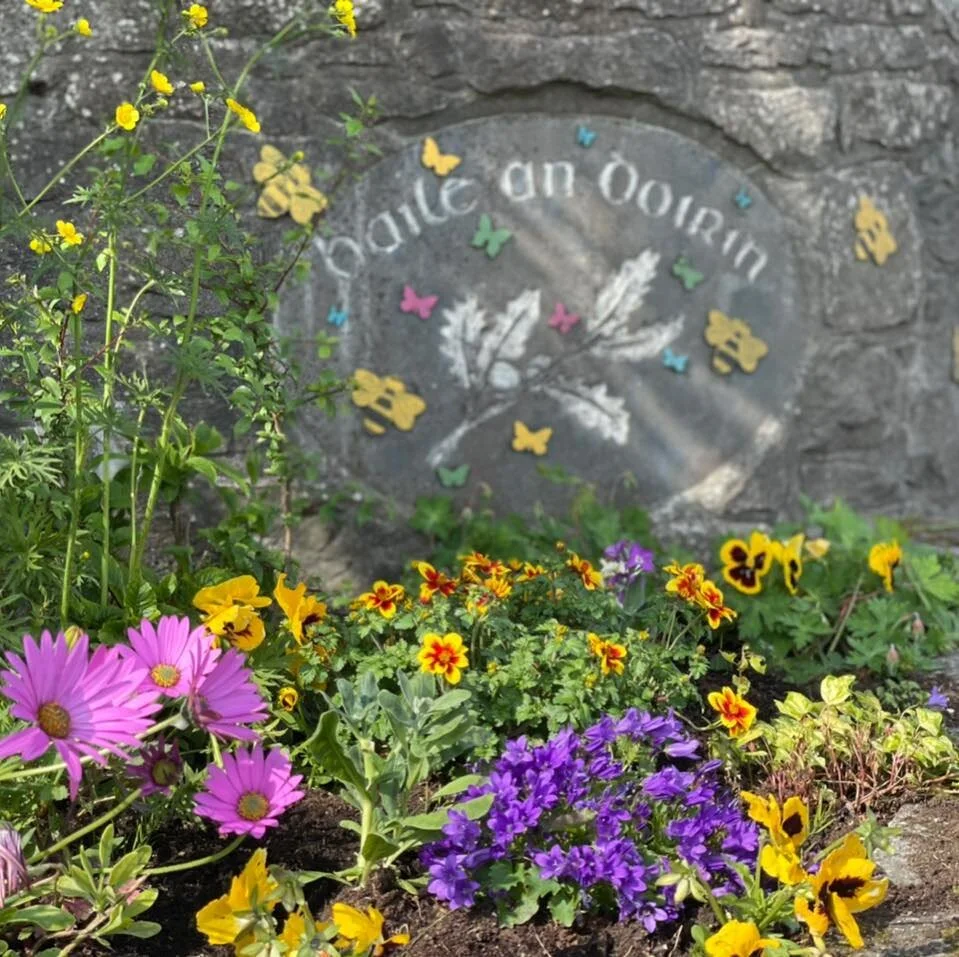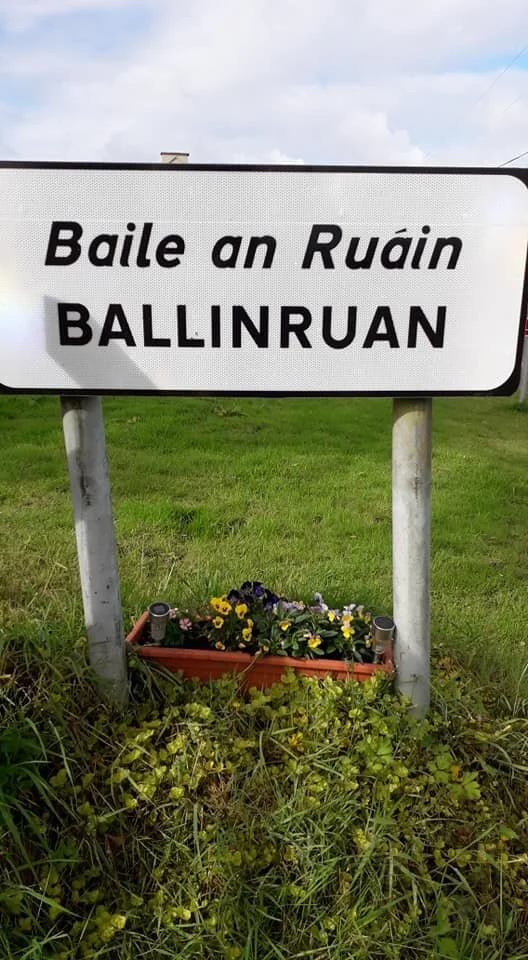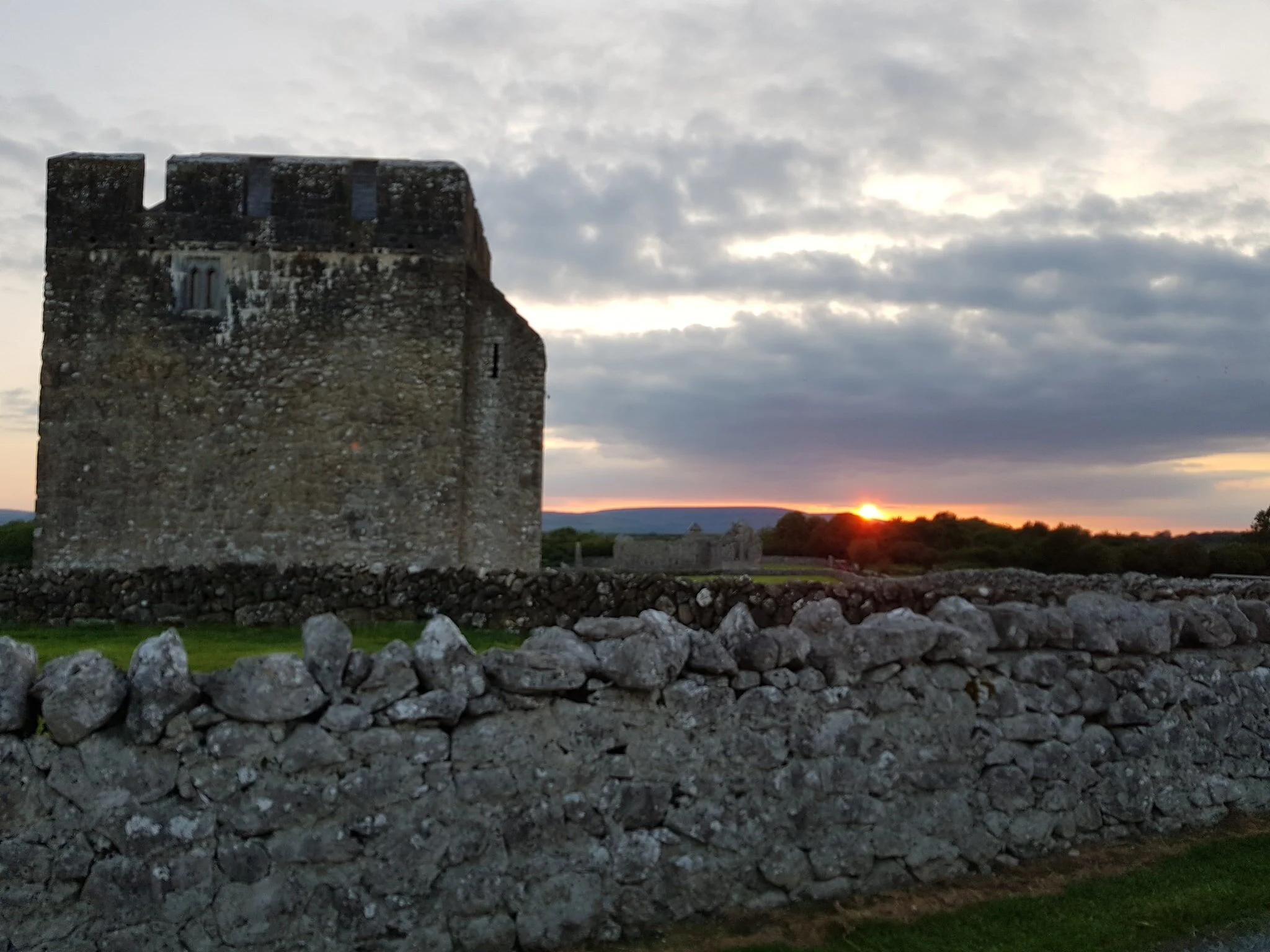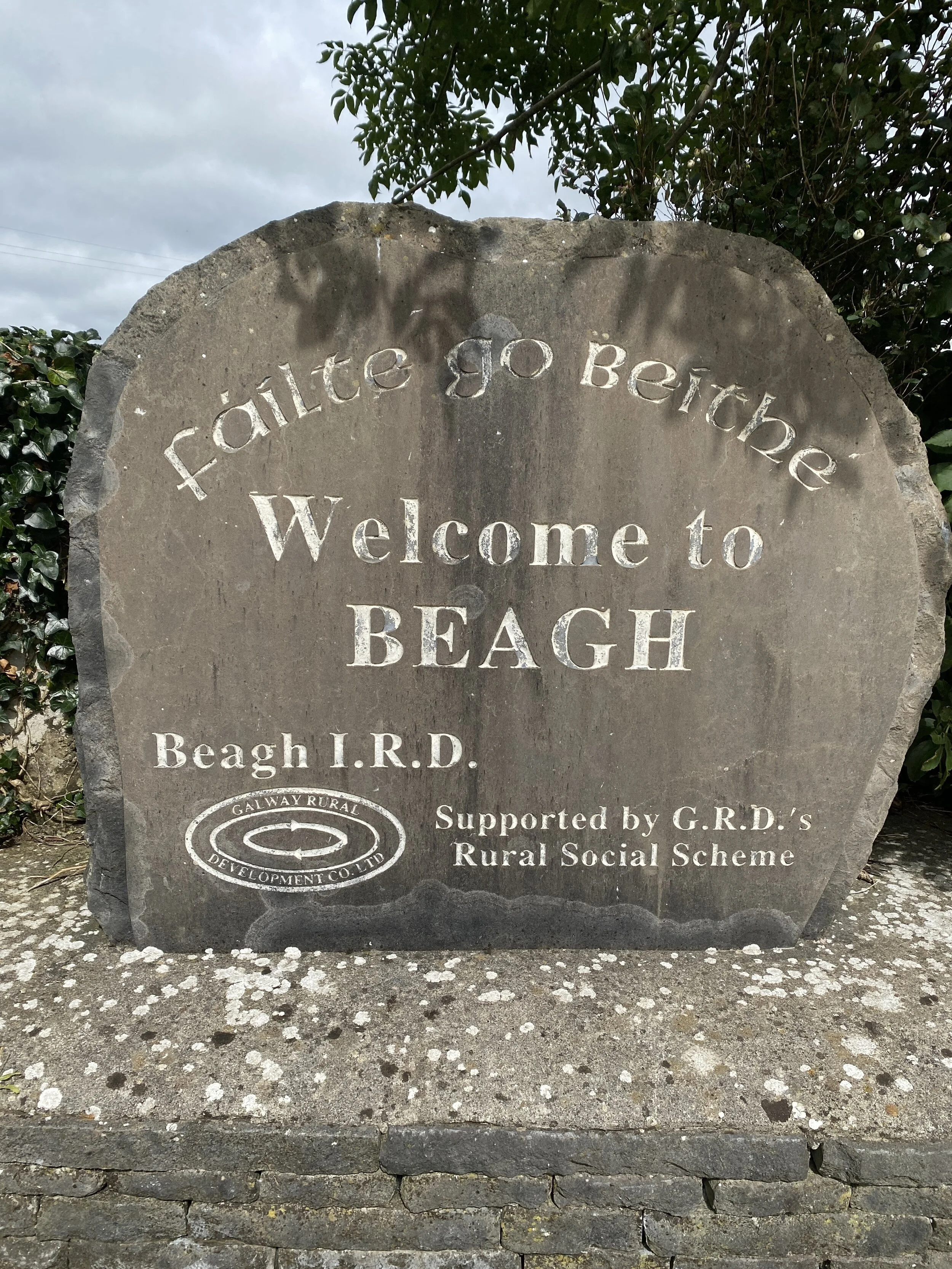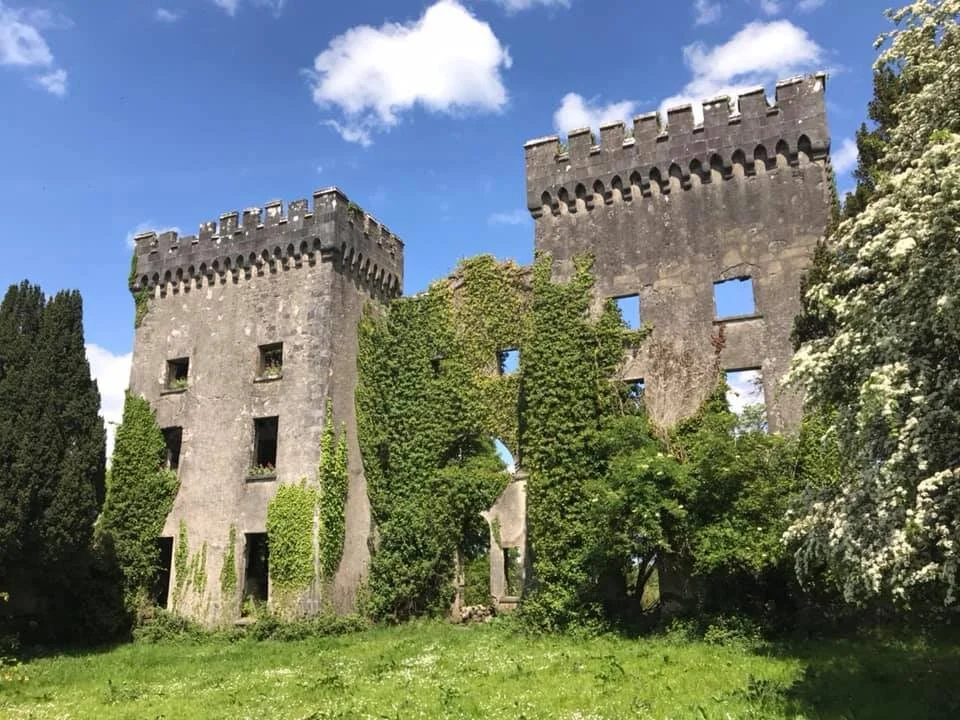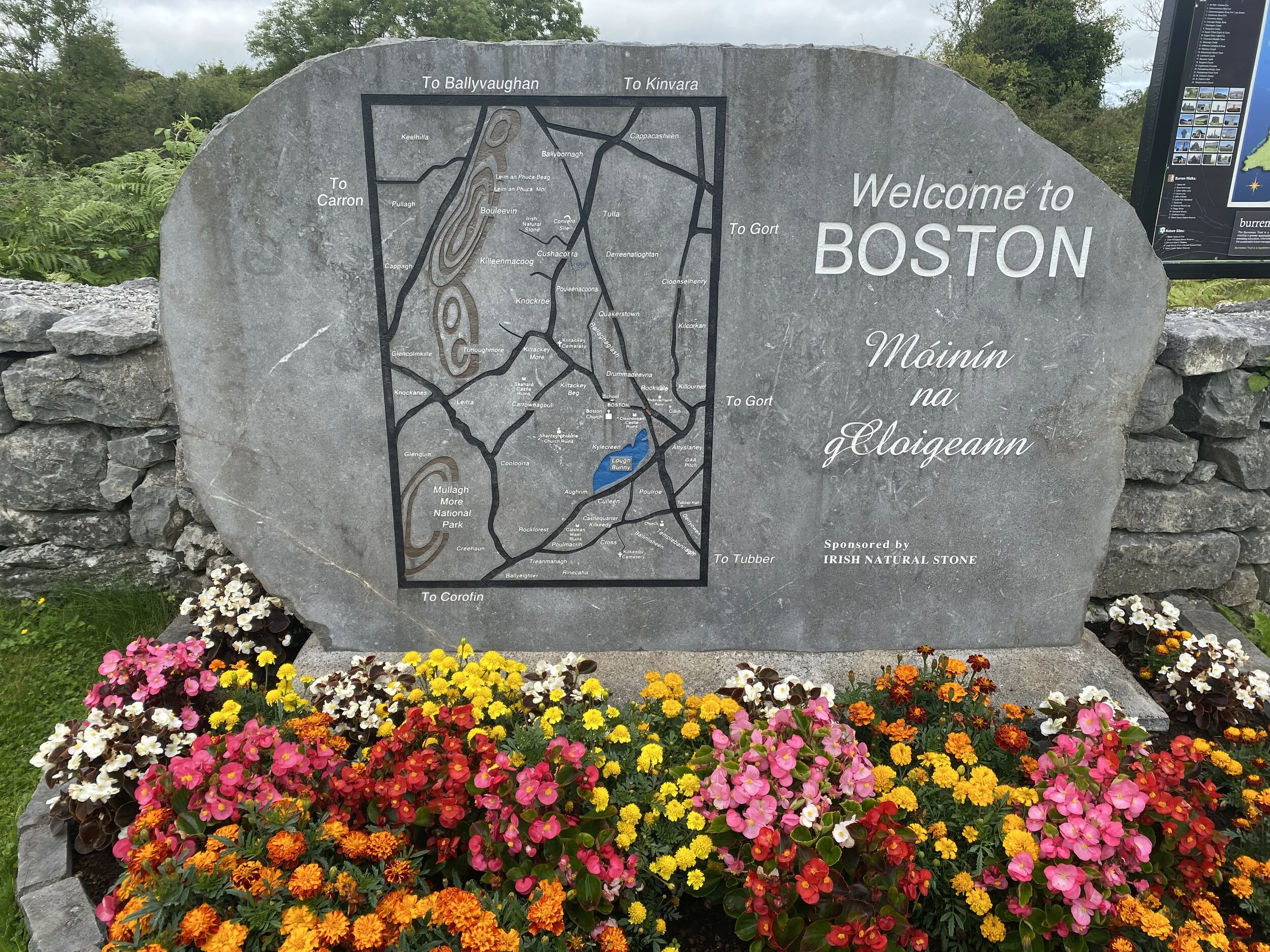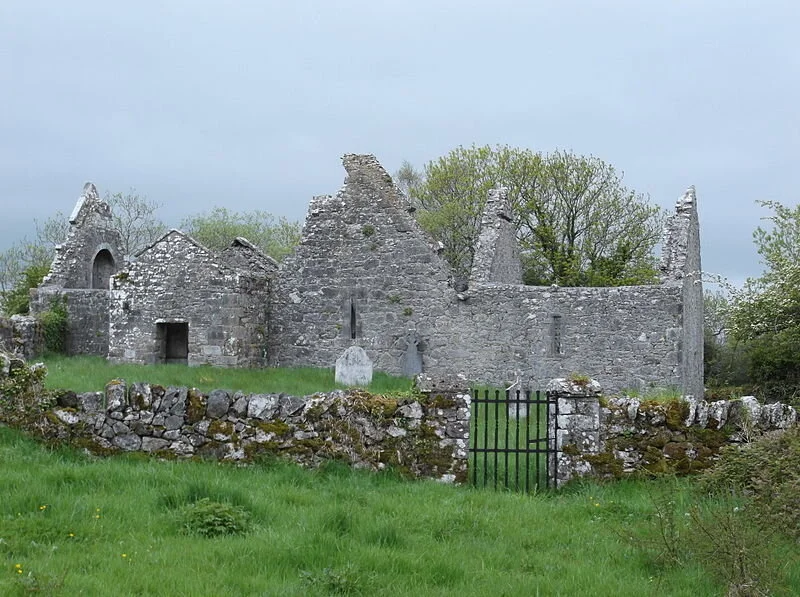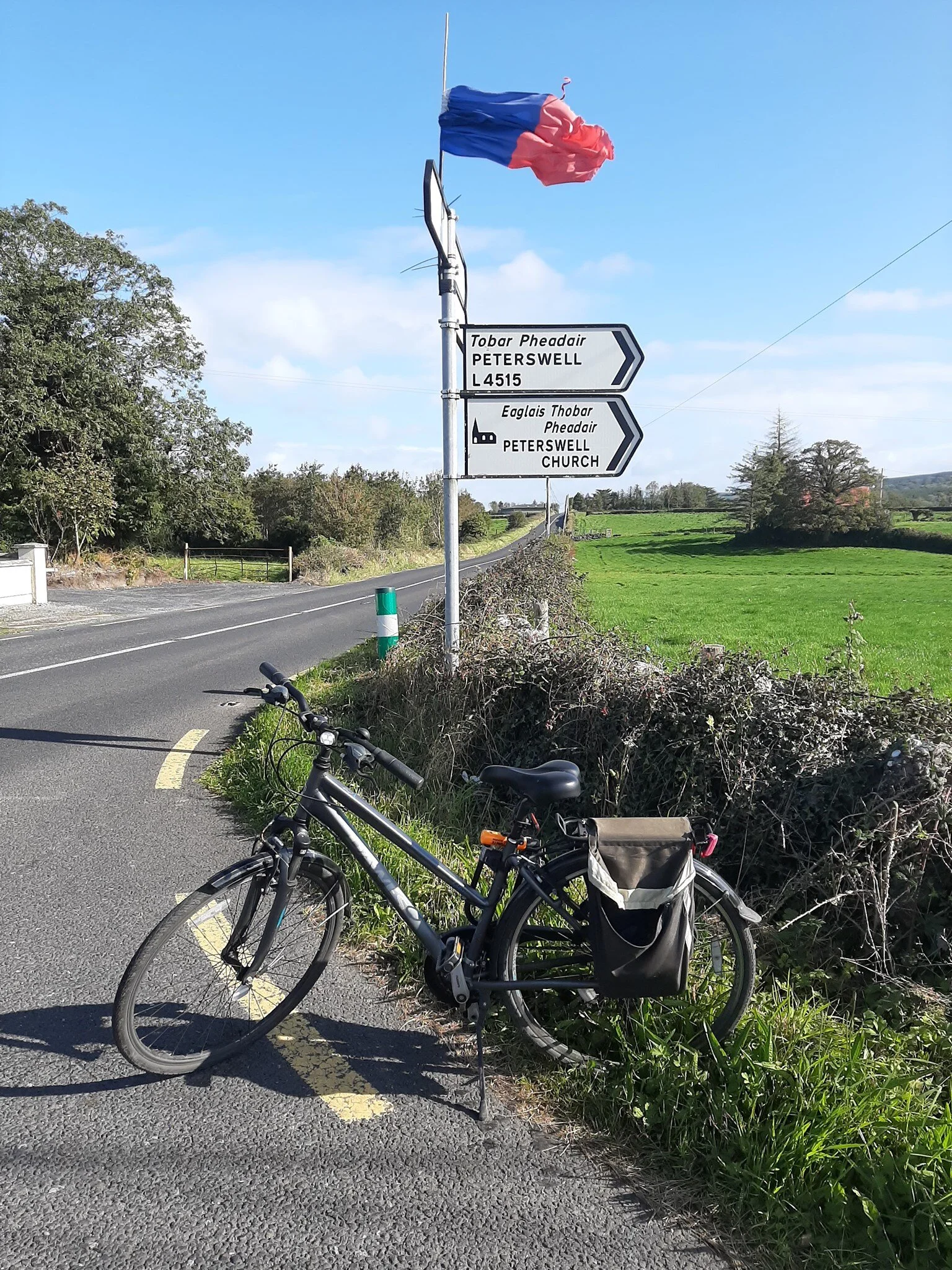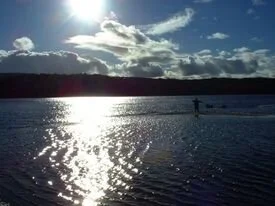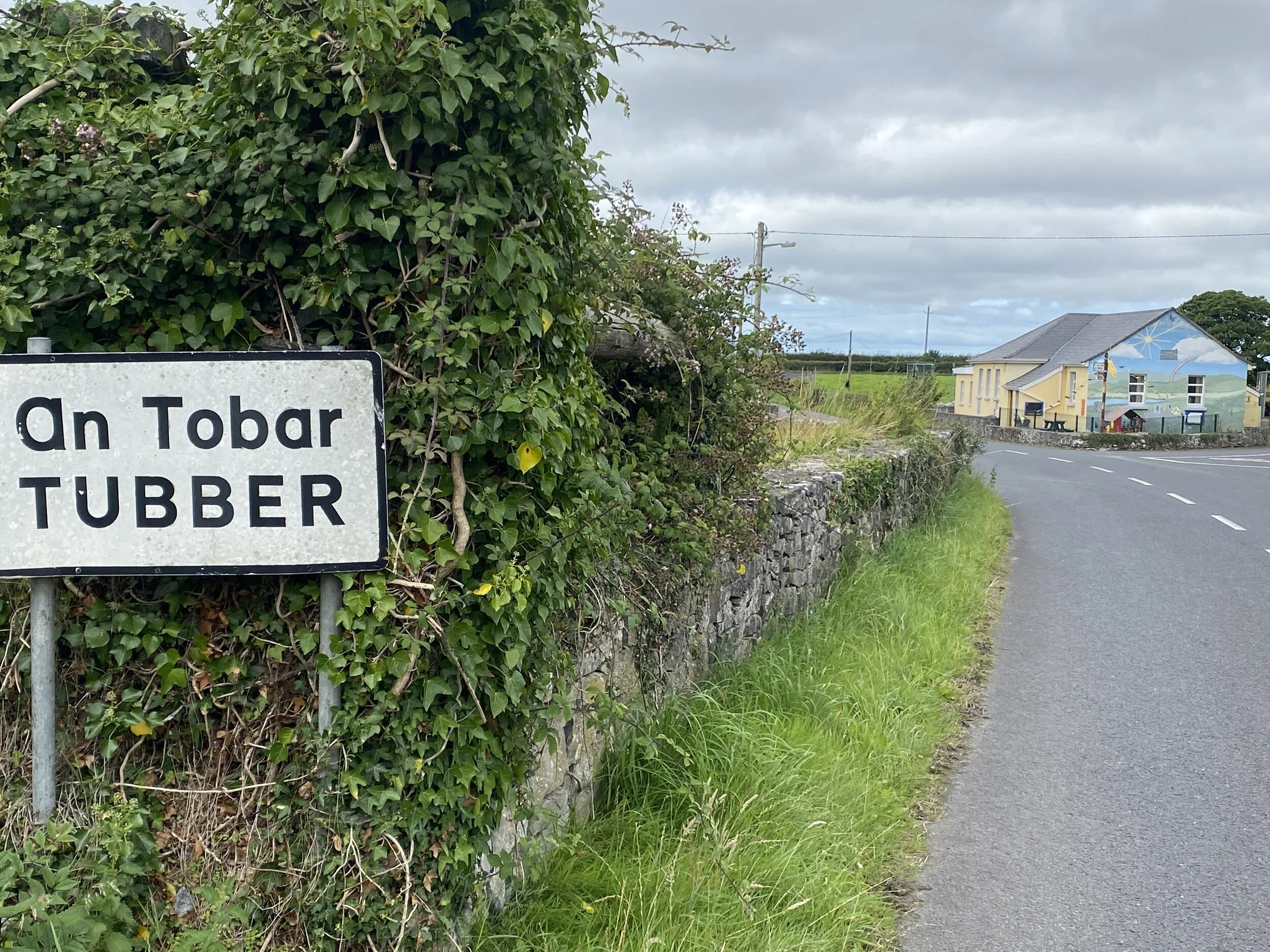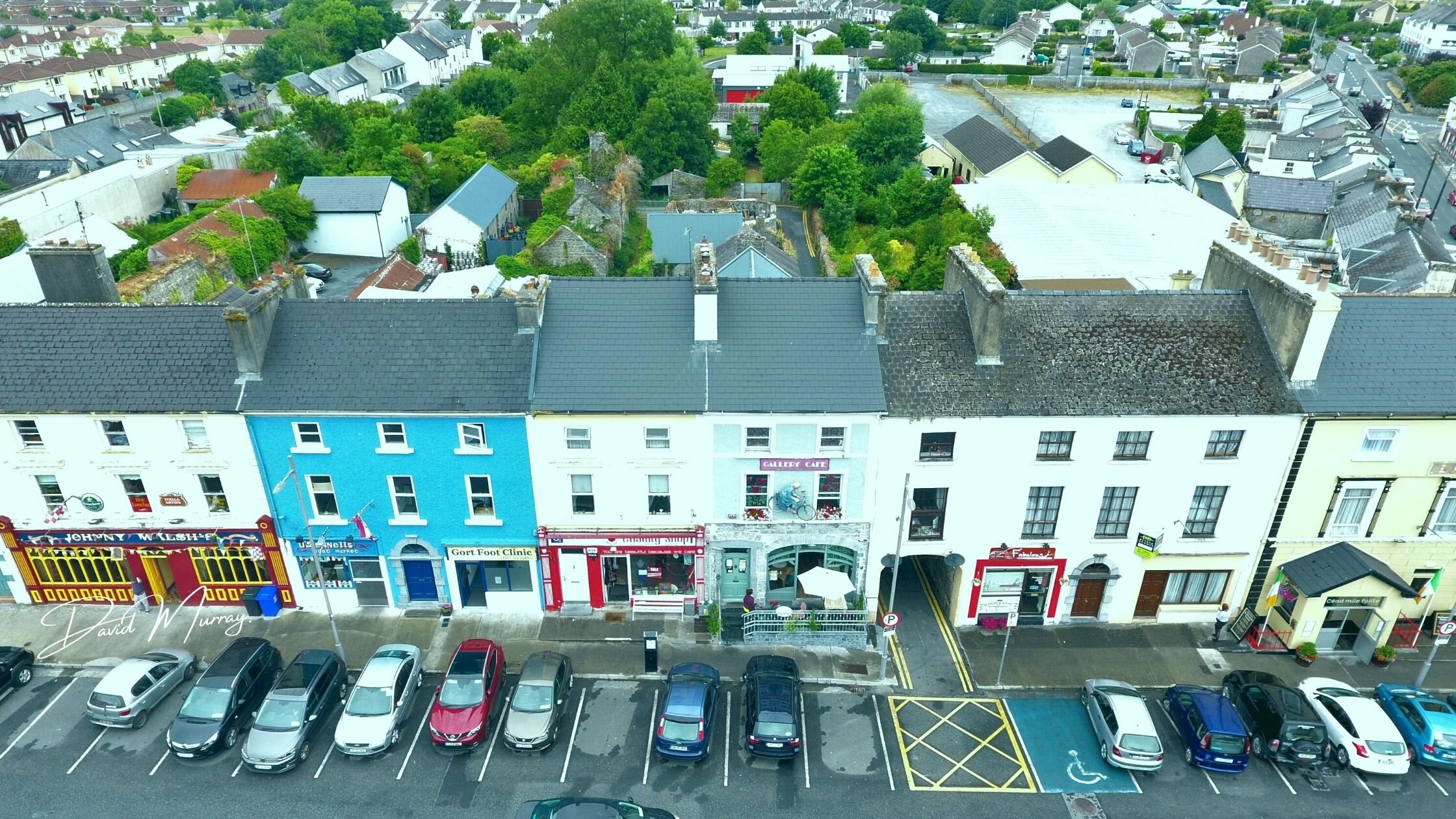
Communities
Towns & Villages
Ireland is made up of some 61,110 townlands – some of them geographic markings dating back to Gaelic times.
Here in the 18 larger communities that make up the Burren Lowlands, some are thriving market towns & villages, others have monuments and community halls which are rich in history, while more have vistas beyond compare.
These places are the grassroots of our community, and many are the strongholds of our culture and heritage. A public transport information link at Get There provides best access routes for visitors to the region.
Ardrahan
The Irish name for Ardrahan is Ard Rathain(Height of the Ferns) it is a small historic village, situated 9 km between Gort and the coastal town of Kinvara. The village emerged in the 13th century and is considered one of the oldest in the area. Ardrahan is fortunate to have a train station on the main Galway to Limerick train line which originally opened in September 1869, within walking distance of the village market square. Castle Taylor Woodlands has walks through limestone pavement one of the Natura 2000 woodlands of special interest in Biodiversity. Ardrahan for Nature is a biodiversity group of locals, that has a monthly walk/talk. Ardrahan Heritage will post local events of interest. Nearby Labane shares its primary school, parish hall and church with Ardrahan and is worth visiting when in the area.
There are celtic revival stained glass windows to be found in the church at Labane.
The Dúchas project - Ardrahan is a digitization of the National Folklore Collection. Places of interest are listed in our What to See and Heritage Pages.
Ballinderreen
Meaning 'townland of the little oak grove', Ballinderreen is located between Kilcolgan and Kinvara. It contains the early Christian settlement of Surney of Drumacoo, founded by female saint Sárnait. She was an associate of Saint Colman mac Duagh and was buried here at the site known as St. Sourney's Bed. The national school here is one of the oldest in Ireland. The area has a strong musical orientation and is one of the few places where the tradition of Mummers is still alive with regular door to door visits by ‘Wren boys’ on St Stephens Day, December 26th.
The Dúchas project – Ballinderreen is a digitization of the National Folklore Collection. Places of interest are listed in our What to See and Heritage Pages.
Ballinruan
Ballinruan is a beautiful rural area in the hills outside Crusheen. It is home to lovely vistas of the surrounding lakes, the Burren, and Galway Bay in the distance. There are two walking/cycling loops plus Midclare Way trails. Although in the heart of the countryside, Ballinruan is only 5 km from Crusheen village and the M18 motorway. A wonderful, serene place to visit and explore. Walking/cycling trails can be found in our Trails and Cycles Pages. Ballinruan has an active area Development Association.
The Dúchas project - Ballinruan is a digitization of the National Folklore Collection. Places of interest are listed in our What to See and Heritage Pages.
Beagh
Beagh is a parish in Co Galway and its main village is Shanaglish. The area has strong associations with hurling. Beagh is one of few clubs whose foundation predates the Gaelic Athletic Association (GAA); their first recorded game, against Kilbeacanty in 1870, was attended by Michael Cusack himself. The area’s other claim to fame is that two of the men photographed in the iconic 1932 photo Lunch Atop a Skyscraper were originally from Shanaglish. A copy of this can be seen in many public houses in the area.
The Dúchas project - Beagh is a digitization of the National Folklore Collection. Places of interest are listed in our What to See and Heritage Pages.
Boston
Boston Is a village in north County Clare. It is situated off R460 the Corofin to Gort regional road, at the north-eastern edge of the Burren National Park, close to the border with County Galway. The name Boston is most likely to have been originally a nickname or ironic reference to what was described in 1839 as "a few cabins situated on the property of the Marquis of Thomond". The Irish name, Móinín na gCloigeann ("little meadow or bog of the skulls"), appears to be a mistaken transfer from that of another place, also called Boston in English, near Cratloe in the south of the county.
The Dúchas project - Boston is a digitization of the National Folklore Collection. Places of interest are listed in our What to See and Heritage Pages.
Carran
The name is derived from the Gaelic word ‘Cairn’ meaning “a mound of stones” and these can be seen dotted throughout the highest points of the Burren as a mark of respect to the dead. This village Carran is located centrally to several tourist sights identified in our What to See page and is also the birthplace of Michael Cusack, one of the founders of the GAA. Poulnabrone, near Carran, is one of the oldest Portal tombs in Ireland. The remains of around 33 people were found buried underneath the monument. The human remains were dated between 3800 and 3200 BC.
The Dúchas project - Carran is a digitization of the National Folklore Collection. Places of interest are listed in our What to See and Heritage Pages.
Castledaly
A rural townland formerly known as Corbally, Castledaly House is now a ruin and once belonged to the Blake family, one of the fourteen Tribes of Galway. Castledaly house had 52 windows and was the site nearby of the 1920 Castledaly Ambush. Please note, no public access as on private land.
The Dúchas project - Castledaly is a digitization of the National Folklore Collection. Places of interest are listed in our What to See and Heritage Pages.
Crusheen
A small village in Co Clare almost halfway between Gort and Ennis, it featured in the film “When All is Ruin Once again”, a documentary about the area and the changes to the area from the development of the motorway. An interesting fact: nearby Maghera mountain was home for many years to one of Ireland’s national television and radio broadcasting transmission sites. Many books have been written by local writers. Tom Coffey had a fantastic book on history of the area, as did Gerry Kennedy, and Eddie Linehan, a local folklorist. The area is home to musicians such as the Mulcaire family of national and international fame. Sports figures include well known national and international runner Micky Foundation and Gerry O Connell, Rachel Linehan, John Mulcaire and many on the Clare teams such as Mick Moroney, Patrick Vaughan, SNR AND JNR, Cion Dillion. Ciaran O’Doherty, captain of the Crusheen under 21 winners all IRELAND, and Gerry O’Connell national and international shot throwing. The Crusheen Community Centre renovation project is due to be completed by 2022.
The Dúchas project - Crusheen is a digitization of the National Folklore Collection. Places of interest are listed in our What to See and Heritage Pages.
Derrybrien
A tiny village in County Galway, Derrybrien lies along the R353 road in the Slieve Aughty Mountains, the site of one of Europe’s largest wind farms, with 70 wind turbines. The wind farm to this day remains a highly contentious subject after a large landslide occurred at the site in 2003. There are many hills and valleys to walk in the locality. Old bog roads through commonage are currently being refurbished and popular local walks include access roads through Coillte (woodland) planting. The local river is slowly recovering trout stock, and with this, the numbers of flora and fauna indigenous to the area, such as heron, ducks and the hen harrier are returning. Derrybrien History FB is a good source of information as is Derrybrien Community.
The Dúchas project - Derrybrien is a digitization of the National Folklore Collection. Places of interest are listed in our What to See and Heritage Pages.
Gort
Located 27km south of Galway city, Gort is the principal town of the Burren Lowlands region and is steeped in a rich and interesting heritage. An historic market town that lies on the Galway/Clare border between the Slieve Aughty Mountains and The Burren, Gort is very accessible with excellent transport links - the M18 motorway runs alongside the town. which is also serviced by both train and bus links. At the height of the Celtic tiger, Gort was known as “Little Brazil” due to the presence of a very high Brazilian population. However, while many have made Gort their home, the overall number has since dwindled. Currently, nearly a third of the population is from other nations (UK, Poland, EU, etc.) according to the Census 2016 Gort.
The Dúchas project - Gort is a digitization of the National Folklore Collection. Places of interest are to be found on our What to See and Heritage Pages.
Killanena
A small rural village in Co Clare with a post office and a pub, located between Gort and Feakle/Scarriff. Heading into the scenic area of East Clare, Killanena is close to the beautiful Lough Graney, the second largest lake in the county, and home or resting place to a range of wonderful waterfowl and wading birds. Killanena means the church of the fair because before the Church was built, there was a fair held in its location.
The Dúchas project - Killanena is a digitization of the National Folklore Collection. Places of interest are listed in our What to See and Heritage Pages.
Kilbeacanty
Small village to the south-east of Gort town on the Portumna road, leading into the Slieve Aughty Mountains. The centre of the village has the church and an old graveyard opposite. There is McCarthy's Pub further on and close by the Hurling club ‘Cill Fheicin’ founded in 1885, Kilbeacanty - GAA Hurling Club. This is a very close-knit community, marked by strong passions for all things GAA and sporting related, particularly hurling. This townland is famous for its annual Tractor Run to raise awareness about Mental Health. As you leave town and travel on towards Portumna the site of the Ballyturin Ambush is located here in Ballyturin townland, commemorating 100 years since the event in 2021. Kilbeacanty is home to a diverse population routed in generations of local families and welcoming new families / migrants/ from around the world who have chosen to make this place their home. Of interest is Abhainn Dá Loilíoch Woodland Group which aims to collaborate with the local community, statutory bodies, and ecologists to restore and increase native woodlands in the Abhainn Dá Loilíoch Valley. See An Tionól Cottage - performance and event venue. Kilbeacanty People Old and New is an up to date store of interesting information for those living in the parish or far away from home. Kilbeacanty - Reaching out to people is a site for those with ancestors or connections to the area.
The Dúchas project - Kilbeacanty is a digitization of the National Folklore Collection. Places of interest are listed in our What to See and Heritage Pages.
Kilchreest
A village on the Gort to Loughrea road on the edge of the Slieve Aughty Hills. Lady Augusta Gregory was born in nearby Roxborough House. The village is home to the beautiful Woodville Walled Gardens, and the start of the Slieve Aughty walking trail. A little known fact is that the 1969 film, Alfred the Great, was partly filmed in Kilchreest with a cast of stars including Sir Ian McKellan, Michael York and Sinead Cusack regular visitors to the area. Ardrahan and Kilchreest Parish is active.
The Dúchas project - Kilchreest is a digitization of the National Folklore Collection. Places of interest are listed in our What to See and Heritage Pages.
Kinvara
Translated from the Irish, its name means “Head of the Sea” and this pretty postcard village sits on the west coast of Galway overlooking the Atlantic ocean, watched by nearby Dunguaire castle. While sitting by the harbour, keep an eye out for the red sails of the famous Galway Hooker, a traditional fishing boat, often found sailing these waters. The village hosts a number of festivals throughout the year and has a really boho vibe to the area, especially in the summer months when tourists flock to visit.
The Dúchas project - Kinvara is a digitization of the National Folklore Collection. Places of interest are listed in our What to See and Heritage Pages.
New Quay
A fishing village in Co Clare, New Quay has a small harbour on the southern shore of Galway Bay in the foothills of the Burren. Famous for its nearby “Flaggy Shore”, a place carved into history by one of Ireland’s best-known poets, the late and much-loved Seamus Heaney, who truly captured the essence of the area in his poem, Postscript, often mistakenly referred to as The Flaggy Shore.
The Dúchas project - New Quay is a digitization of the National Folklore Collection. Places of interest are listed in our What to See and Heritage Pages.
Peterswell
Located between Gort and Kilchreest on the Loughrea Rd and extending into the Slieve Aughty hills, Peterswell is an active member of the national diaspora programme, Ireland Reaching Out. Whether you are tracing your family tree or look to connect with Irish people abroad, the people of Peterswell will be delighted to welcome you to their community. This village has a strong musical history and is the birthplace of Joe Cooley while Kieran Collins’ father hailed from the village Peterswell is also on the Yeats trail and Monastic trail.
The Dúchas project - Peterswell is a digitization of the National Folklore Collection. Places of interest are listed in our What to See and Heritage Pages.
Tierneevan
This small rural community at the foothills of the Burren and guarded over by the nearby leaning tower of Kilmacduagh, Tierneevan is the gateway to the Burren. Visitors will notice the dramatic change in landscape from lush green fields to barren fields of limestone rock, once you turn right at the local church and take the Kinvara road.
The Dúchas project - Tierneevan is a digitization of the National Folklore Collection. Places of interest are listed in our What to See and Heritage Pages.
Tubber
Meaning The Well, Tubber had its name shortened from the original Tobar Rí an an Domhnaigh translates as "well of the king of Sunday". A loosely defined rural community that spans the border of Co Clare and Co Galway, Tubber is home to a huge engineering plant that manufactures farming equipment for both the domestic and international market. The area has a very strong hurling base.
The Dúchas project - Tubber is a digitization of the National Folklore Collection. Places of interest are listed in our What to See and Heritage Pages.
Find Us On The Map
Click each location below this map for directions.

